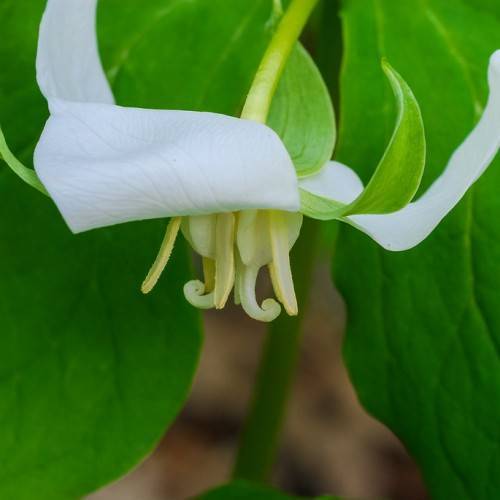
nodding wakerobin
Trillium flexipes
Cycle:
Herbaceous Perennial
Watering:
Average
Hardiness Zone:
4 - 7
Flowers:
Flowers
Sun:
Part shade,full shade
Leaf:
Yes
Growth Rate:
Low
Maintenance:
Moderate
Thorny:
Yes
Care Level:
Medium
watering
Nodding wakerobin (Trillium flexipes) thrives in moist, well-drained soil. Water the plant deeply and regularly, providing enough water to moisten the soil to a depth of at least 6 inches. Water the plant every 3 to 6 days, or when the soil is starting to dry out. During hot weather, water more frequently to keep the soil from drying out. In the winter months, reduce watering to once or twice a month. Before applying water, check the plants to ensure they are still damp and not overly saturated.
sunlight
Nodding wakerobin (Trillium flexipes) prefers partial shade to full sun. As a woodland plant, it tolerates dappled sunlight better than direct, full-sun exposure and should not be exposed to direct sunlight during midday hours. Nodding wakerobin needs at least 4 hours of sun each day in order to flower. This means the best times for this plant’s exposure to sunlight is during the morning and late afternoon when the light is less direct. Additionally, its spot should not be close to a south-facing building, as this can increase the chance of scorching due to the greater intensity of sunlight in this area. Nodding wakerobin should also be shielded from prevailing winds that can cause burning or wilting of its foliage.
pruning
Nodding wakerobin (Trillium flexipes) should be pruned during the winter season, when the plant is dormant. Pruning should consist of removing dead or damaged stems and cutting back any stems that were weakened or leaning in the previous year. For flowering, take care not to prune too late in the season, as this can inhibit flower growth. It is best to wait until late February or March to do the job. Excessive pruning can harm the plant so only remove about 1-third of the stems. Also it is important to sterilize pruning tools prior to use to minimize the chance of infection. Lastly, avoid cutting back the foliage, as this will reduce the energy the plant produces for growth and flowering.
